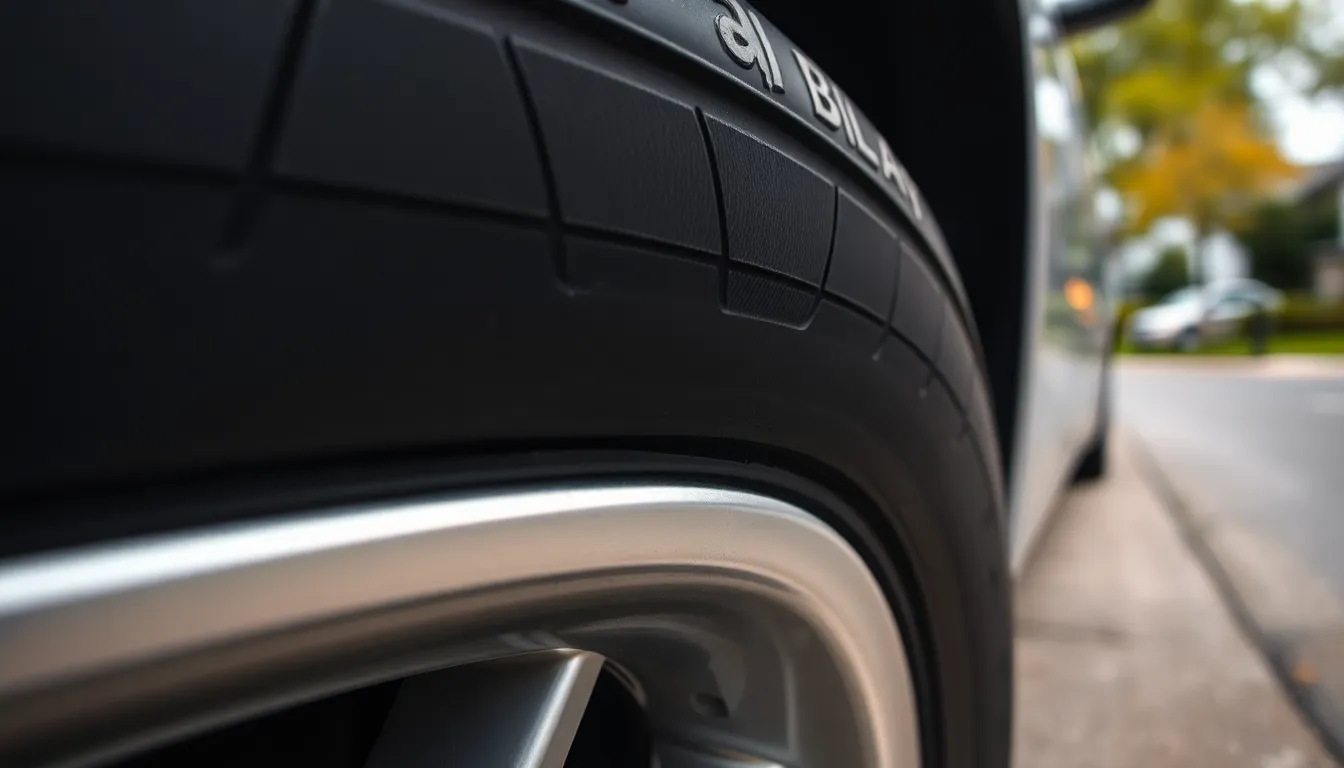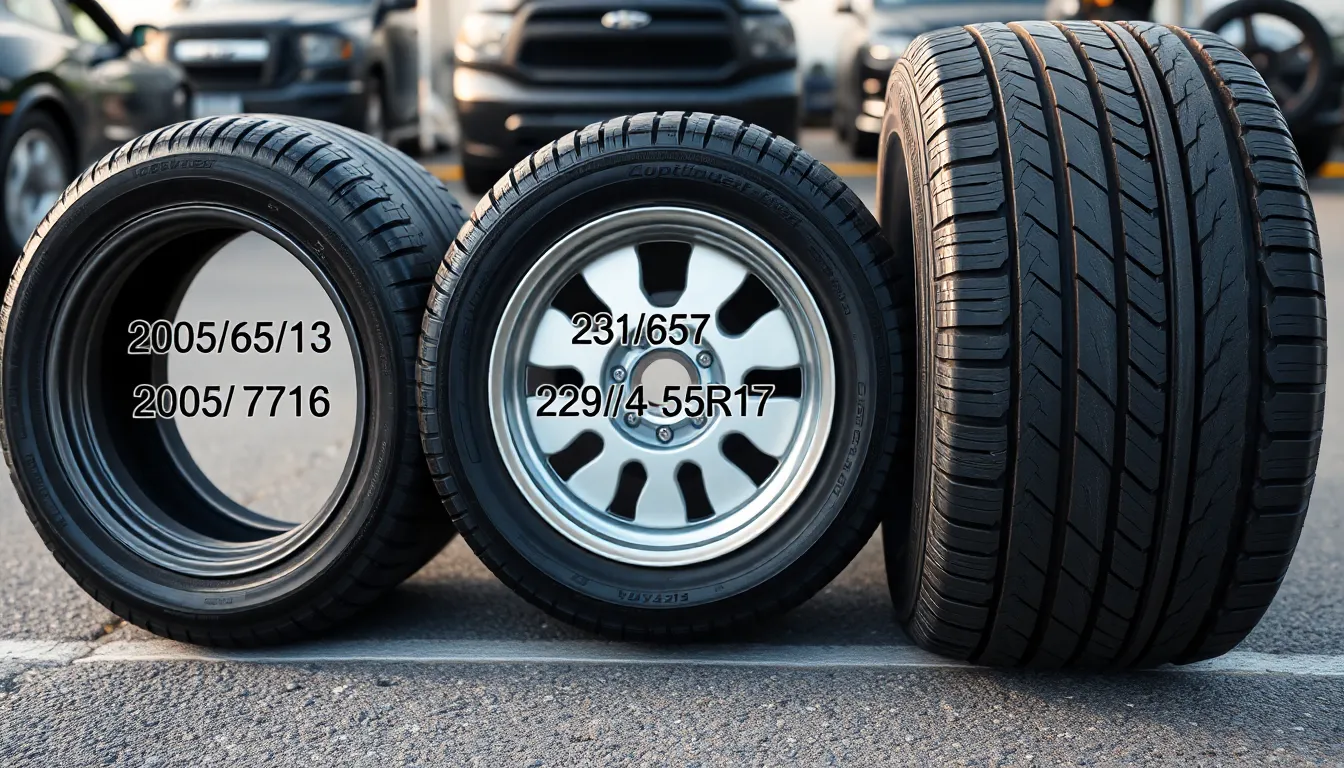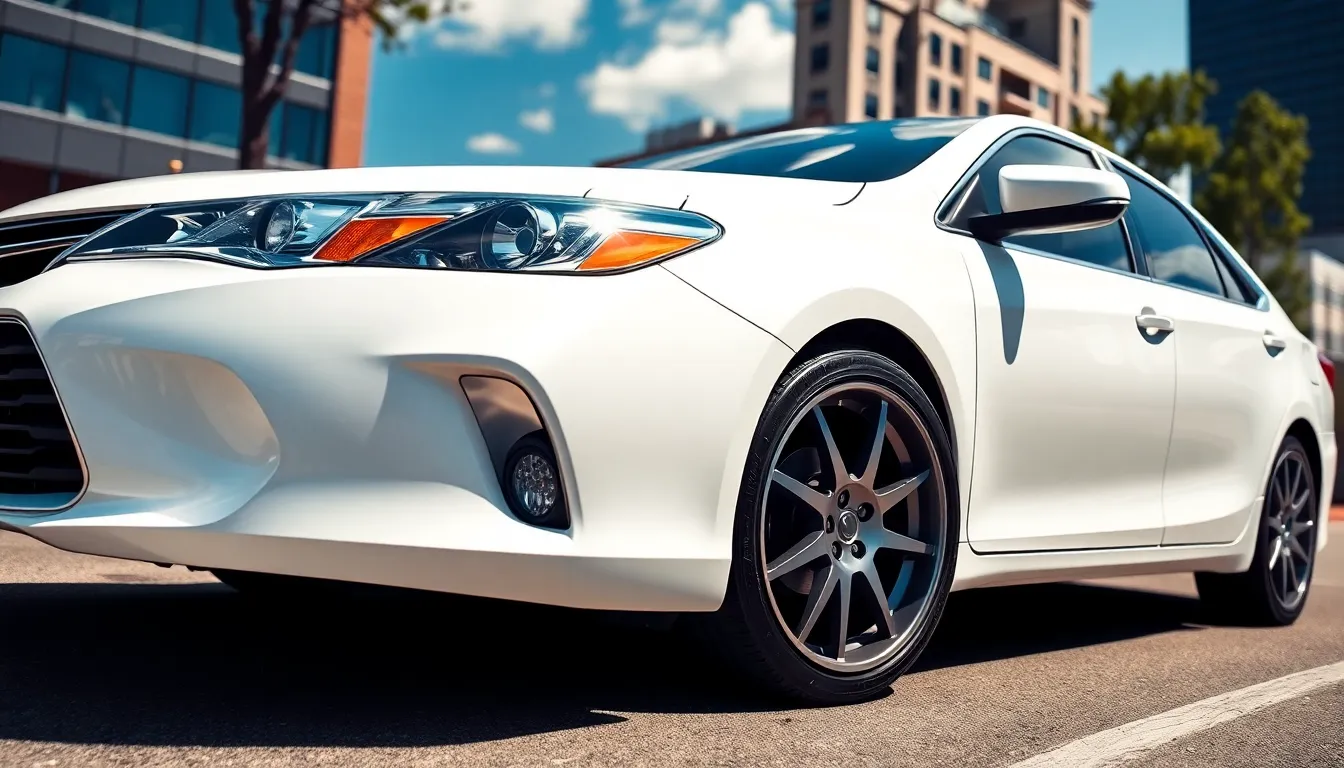Finding the right tire size for your 2015 Toyota Camry isn’t just about replacing what’s already there – it’s about maximizing your vehicle’s performance, safety, and fuel efficiency. We’ve seen countless drivers struggle with tire confusion, leading to poor handling, increased wear, and unnecessary expenses.
Your 2015 Camry came with exact tire specifications that Toyota engineers carefully selected to optimize everything from ride comfort to braking distance. Whether you’re dealing with a flat tire emergency or planning a complete set replacement, understanding these specifications can save you hundreds of dollars and ensure your sedan performs exactly as intended.
We’ll break down everything you need to know about your Camry’s tire requirements, including the standard sizes across different trim levels, alternative options that maintain factory performance, and what those confusing numbers on your tire sidewall actually mean for your daily driving experience.
2015 Toyota Camry Tire Size Specifications
Understanding the precise tire dimensions for your 2015 Toyota Camry ensures optimal vehicle performance and safety. We’ve compiled comprehensive specifications for each trim level to help you make informed tire decisions.
Standard Tire Sizes by Trim Level
Base L and LE Models come equipped with 215/60R16 tires as standard equipment. These dimensions provide balanced fuel economy and ride comfort for daily driving scenarios.
SE Sport Models feature larger 17-inch wheels with 215/55R17 tire sizes. This configuration delivers enhanced handling response and sportier road feel compared to the base models.
XLE and XSE Premium Trims use 215/55R17 tires identical to the SE variant. Both premium trim levels maintain the same tire specifications even though their different styling and feature packages.
Hybrid Variants across all trim levels retain their respective gasoline counterpart tire sizes. LE Hybrid models use 215/60R16 while SE and XLE Hybrid versions mount 215/55R17 tires.
OEM Tire Specifications and Load Ratings
| Tire Size | Load Index | Speed Rating | Load Capacity (lbs) | Recommended Pressure (PSI) |
|---|---|---|---|---|
| 215/60R16 | 95 | H | 1,521 | 32 |
| 215/55R17 | 94 | V | 1,477 | 32 |
Load Index Numbers indicate maximum weight capacity per tire under proper inflation conditions. The 95 rating on 16-inch tires supports 1,521 pounds while 17-inch variants with 94 rating handle 1,477 pounds per tire.
Speed Ratings differ between tire sizes with H-rated 16-inch tires certified for speeds up to 130 mph. V-rated 17-inch options allow sustained speeds reaching 149 mph for enhanced performance driving.
Tire Pressure Requirements remain consistent at 32 PSI for both front and rear positions across all 2015 Camry variants. This pressure specification appears on the driver’s side door jamb placard for easy reference during maintenance.
Construction Details include radial ply design with steel belt reinforcement for durability. All OEM tire options feature DOT compliance markings and UTQG treadwear ratings between 400 and 500 depending on manufacturer.
Understanding Tire Size Numbers and Markings

Understanding tire markings helps us select appropriate replacements for our 2015 Toyota Camry. These alphanumeric codes contain essential information about tire dimensions, construction, and performance capabilities.
Decoding the Tire Size Format
The tire size format follows a standardized system that reveals critical specifications. Taking the Camry SE’s 215/55R17 tire as an example, each element provides exact information about the tire’s characteristics.
215 represents the tire width measured in millimeters from sidewall to sidewall. This measurement directly affects the tire’s contact patch with the road surface and influences handling characteristics.
55 indicates the aspect ratio, expressing the tire’s height as a percentage of its width. A 55 aspect ratio means the tire’s height equals 55% of the 215mm width, resulting in a sidewall height of approximately 118mm.
R denotes radial construction, the standard tire building method used in modern passenger vehicles. Radial tires feature cord plies running perpendicular to the tire’s centerline, providing better fuel economy and longer tread life compared to bias-ply construction.
17 specifies the rim diameter in inches, indicating the wheel size this tire fits. Our Camry’s different trim levels use varying rim diameters ranging from 16 to 18 inches depending on the model.
Speed Rating and Load Index Explained
Speed ratings and load indexes provide crucial safety information beyond basic tire dimensions. These specifications ensure our tires can handle the Camry’s performance requirements under various driving conditions.
Speed ratings appear as letters following the tire size, with H being common for most Camry applications. An H rating allows safe operation up to 130 mph, exceeding typical highway speeds and providing adequate safety margins for emergency maneuvers.
Load index numbers represent the maximum weight each tire can support when properly inflated. The 2015 Camry’s OEM tires typically carry load indexes between 91 and 94, supporting loads from 1,356 to 1,477 pounds per tire.
Matching these specifications becomes critical when replacing tires, as insufficient load capacity or speed ratings can compromise vehicle safety. We recommend consulting tire professionals when considering alternative sizes to ensure compatibility with our Camry’s requirements and maintain optimal performance characteristics.
Performance Analysis of Factory Tires

The three factory tire configurations for the 2015 Toyota Camry deliver distinct performance characteristics that directly impact your driving experience. Each size offers exact advantages in comfort, efficiency, and handling based on the sidewall height and wheel diameter combination.
Ride Quality and Comfort
The 205/65R16 tires equipped on LE and Hybrid LE trims provide superior ride comfort through their thick sidewalls that effectively absorb road imperfections. These taller sidewalls act as additional cushioning between the road surface and your vehicle’s suspension system.
Conversely, the 215/55R17 configuration found on SE, XLE, and Hybrid SE/XLE models transmits more road noise and vibrations into the cabin due to their reduced sidewall height. The 225/45R18 setup available on certain variants produces the firmest ride quality as the shorter sidewalls offer minimal bump absorption capabilities.
Drivers prioritizing comfort for daily commuting and highway travel benefit most from the 16-inch wheel configuration. The increased sidewall flexibility creates a noticeably quieter and smoother driving experience compared to the larger wheel options.
Fuel Economy Impact
Smaller wheel and tire combinations consistently deliver better fuel efficiency in the 2015 Camry lineup. The 205/65R16 tires weigh less than their larger counterparts and generate reduced rolling resistance on road surfaces.
The 215/55R17 and 225/45R18 configurations carry additional weight from the larger wheels and wider tire treads. This increased mass requires more energy to accelerate and maintain speed, resulting in slightly higher fuel consumption during normal driving conditions.
Rolling resistance increases proportionally with tire width and decreases with sidewall height. The narrower 205/65R16 tires create less friction against the road surface, allowing the engine to operate more efficiently across various driving scenarios.
Handling and Safety Characteristics
Lower profile tire configurations significantly enhance cornering precision and steering responsiveness in the 2015 Camry. The 215/55R17 and 225/45R18 tires feature stiffer sidewalls that resist deformation during aggressive turning maneuvers.
These shorter sidewalls provide improved braking performance by maintaining better contact patch stability under hard deceleration. The reduced sidewall flex translates steering inputs more directly to the road surface, creating a more connected driving feel.
The 205/65R16 tires excel in wet weather conditions through their ability to channel water effectively while maintaining good traction on slippery surfaces. Their taller sidewalls also contribute to enhanced stability during highway driving and crosswind situations.
Factory tire engineers optimized each configuration to balance grip, tread longevity, and ride characteristics across different Camry trim levels and intended use cases.
Alternative Tire Size Options

We’ve covered the factory specifications for each Camry trim, and now we’ll explore alternative tire sizes that maintain compatibility while potentially improving exact performance characteristics. These alternatives offer flexibility for owners seeking different driving experiences without compromising safety or vehicle integrity.
Plus Sizing Considerations
Plus sizing represents a strategic approach to upgrading your 2015 Camry’s tire and wheel combination by increasing rim diameter while maintaining overall tire diameter. Moving from the standard 215/60R16 configuration to 215/55R17 exemplifies this concept perfectly, preserving speedometer accuracy while delivering improved aesthetics and handling response.
Common Plus Size Configurations:
| Original Size | Plus Size Option | Wheel Size Change | Performance Impact |
|---|---|---|---|
| 215/60R16 | 215/55R17 | 16″ to 17″ | Enhanced handling, firmer ride |
| 205/65R16 | 215/55R17 | 16″ to 17″ | Improved cornering, reduced sidewall flex |
| 215/55R17 | 225/45R18 | 17″ to 18″ | Superior grip, sportier appearance |
Cross sectional increases within the same wheel size offer another modification path, such as upgrading from 215/55R17 to 225/45R18. This approach can improve grip and performance characteristics but may impact fuel efficiency due to increased rolling resistance and weight.
Successful plus sizing maintains the overall diameter within 3% of the original specification to preserve accurate speedometer readings and prevent clearance issues. We recommend consulting tire professionals to verify compatibility with your exact Camry’s suspension geometry and wheel well clearances.
Performance Tire Upgrades
Performance tire upgrades transform your Camry’s driving dynamics through superior tread compounds and specialized tread patterns designed for enhanced grip on both dry and wet surfaces. These tires feature advanced rubber formulations that maintain flexibility across wider temperature ranges compared to standard all season options.
High Performance Tire Features:
- Enhanced tread compounds for superior dry and wet traction
- Asymmetrical tread patterns optimizing cornering stability
- Higher speed ratings (V or W) supporting sustained high speed driving
- Reinforced sidewall construction reducing flex during aggressive cornering
- Specialized siping patterns improving braking performance
Speed ratings become particularly important with performance upgrades, as these tires often feature V ratings (149 mph) or W ratings (168 mph) compared to the standard H rating (130 mph) found on factory Camry tires. Performance tires typically sacrifice some tread longevity and cold weather capability for enhanced grip and responsiveness.
Temperature ratings also improve with performance upgrades, moving from standard B ratings to A or AA ratings that indicate superior heat resistance during aggressive driving conditions. We recommend performance tire upgrades for Camry owners prioritizing handling precision and cornering capability over maximum fuel economy and ride comfort.
Best Tire Brands and Models for 2015 Camry

Three premium manufacturers consistently deliver exceptional performance for 2015 Toyota Camry applications: Michelin, Goodyear, and Continental. Each brand offers comprehensive model lineups designed specifically for the Camry’s diverse trim configurations and driving requirements.
All-Season Tire Recommendations
Michelin Premier LTX stands out as our top all-season choice, featuring EverGrip technology that maintains wet traction throughout the tire’s lifespan. This model fits perfectly on 215/60R16 and 215/55R17 Camry configurations, delivering 60,000-mile tread life warranties.
Goodyear Assurance All-Season provides excellent value with its asymmetric tread design and ComfortFlex technology. We recommend this tire for daily commuting, as it reduces road noise by 15% compared to standard all-season compounds while maintaining strong wet and dry grip.
Continental AllSeasonContact LS utilizes advanced silica compounds and features EcoPlus technology for improved fuel efficiency. This model extends range by up to 3% compared to factory tires, making it ideal for hybrid Camry variants prioritizing maximum fuel economy.
Performance and Touring Options
Michelin Pilot Sport A/S 3+ delivers exceptional dry performance with its Variable Contact Patch 3.0 technology, providing 20% shorter stopping distances compared to standard all-season tires. We recommend this model for SE and XSE trim owners seeking enhanced cornering precision.
Goodyear Eagle F1 Asymmetric 3 features ActiveBraking technology and specialized shoulder blocks that increase contact pressure during emergency braking situations. This tire excels in both wet and dry conditions, with compound formulations optimized for temperatures above 45°F.
Continental ExtremeContact DWS 06 combines touring comfort with performance capabilities through its SportPlus technology and tuned performance indicators. We select this model for XLE owners wanting responsive handling without sacrificing ride quality, as it maintains excellent tread life ratings of 50,000 miles.
Tire Maintenance and Replacement Tips

Proper tire maintenance extends the life of our 2015 Camry tires and ensures optimal performance across all driving conditions. Following these maintenance practices saves money and enhances safety.
When to Replace Your Tires
Tread depth serves as the primary indicator for tire replacement timing. We recommend using the penny test or a tread depth gauge to measure remaining tread depth regularly. Tires require replacement when tread depth reaches 1/16 inch or less according to industry safety standards.
Visual inspection reveals other replacement indicators beyond tread depth. Uneven wear patterns signal alignment issues or improper inflation that compromises tire performance. Sidewall cracks develop from age and UV exposure while bulges indicate internal damage from impact or overloading.
Age determines replacement necessity regardless of tread condition. Tire manufacturers recommend replacement every 6 to 8 years from the manufacturing date found on the sidewall. Our 2015 Camry benefits from this timeline especially if we drive fewer than 10,000 miles annually.
Seasonal wear patterns appear differently across tire positions. Front tires typically wear faster due to steering and braking forces while rear tires may show edge wear from cornering. Replacing tires in pairs maintains balanced handling characteristics essential for our Camry’s stability systems.
Proper Inflation and Care
Tire pressure maintenance directly impacts fuel economy and tire longevity for our 2015 Camry. The recommended pressure ranges between 32 to 35 psi for most models with exact recommendations found on the driver’s door sticker. Checking pressure monthly when tires are cold provides accurate readings.
Temperature changes affect tire pressure significantly throughout the year. Pressure drops approximately 1 psi for every 10-degree temperature decrease requiring seasonal adjustments. Our Camry’s tire pressure monitoring system alerts us to important pressure loss but monthly manual checks catch gradual changes.
Rotation scheduling every 5,000 miles ensures even wear distribution across all four tires. This practice extends overall tire life and maintains consistent traction characteristics. Front wheel drive vehicles like our Camry benefit from cross rotation patterns that move rear tires to opposite front positions.
Wheel balancing accompanies rotation services to eliminate vibration and promote even wear. Unbalanced wheels create irregular contact patches that reduce tire life and affect ride quality. Professional balancing after rotation maintains our Camry’s smooth driving experience and optimal handling performance.
Storage considerations matter when switching between seasonal tire sets. Clean tires stored in cool dry locations away from direct sunlight preserve rubber compounds. Stacking tires horizontally or hanging them vertically prevents deformation during extended storage periods.
Conclusion
We’ve covered everything you need to know about 2015 Toyota Camry tire sizes to make informed decisions for your vehicle. From understanding the factory specifications across different trim levels to exploring performance upgrades and maintenance best practices your Camry’s tires play a crucial role in your driving experience.
Remember that proper tire selection isn’t just about finding the right numbers – it’s about matching your driving needs with the right performance characteristics. Whether you prioritize fuel efficiency comfort or handling there’s a tire solution that’ll work perfectly for your 2015 Camry.
Regular maintenance and timely replacements will keep your Camry performing at its best while ensuring your safety on the road. With the knowledge we’ve shared you’re now equipped to make confident tire decisions that’ll serve you well for thousands of miles ahead.
Frequently Asked Questions
What tire size does a 2015 Toyota Camry use?
The 2015 Toyota Camry uses different tire sizes depending on the trim level. Base L and LE models come with 215/60R16 tires, while SE Sport models feature 215/55R17 tires. XLE and XSE trims share the same tire size as the SE. Hybrid variants maintain the same tire sizes as their gasoline counterparts, ensuring consistent performance across the lineup.
What is the recommended tire pressure for a 2015 Camry?
The recommended tire pressure for all 2015 Toyota Camry models is consistently 32 PSI. However, maintaining proper tire inflation between 32 to 35 PSI is acceptable for optimal performance. Always check your tire pressure when tires are cold for the most accurate reading, and adjust according to your owner’s manual specifications.
How do I read tire size numbers on my Camry?
Tire size numbers follow a standardized format. Using the Camry SE’s 215/55R17 as an example: 215 represents tire width in millimeters, 55 is the aspect ratio (sidewall height percentage), R indicates radial construction, and 17 is the rim diameter in inches. Additional markings include load index and speed rating for safety specifications.
Can I use different tire sizes on my 2015 Camry?
Yes, you can use alternative tire sizes through plus sizing, which increases rim diameter while maintaining overall tire diameter to preserve speedometer accuracy. However, any changes should maintain compatibility with your vehicle’s specifications. Always consult with tire professionals before switching sizes to ensure safety and optimal performance without compromising handling or fuel efficiency.
What are the best tire brands for a 2015 Camry?
Premium tire brands for the 2015 Camry include Michelin, Goodyear, and Continental. Recommended all-season options are Michelin Premier LTX for wet traction, Goodyear Assurance All-Season for noise reduction, and Continental AllSeasonContact LS for fuel efficiency. For performance, consider Michelin Pilot Sport A/S 3+ or Goodyear Eagle F1 Asymmetric 3.
When should I replace my 2015 Camry tires?
Replace your tires when tread depth reaches 2/32 of an inch, which you can check using the penny test or a tread depth gauge. Also replace tires showing uneven wear patterns, sidewall cracks, or bulges. Regardless of tread condition, tires should be replaced every 6 to 8 years due to rubber degradation over time.
How often should I rotate my Camry tires?
Rotate your 2015 Camry tires every 5,000 to 7,500 miles or according to your maintenance schedule. Regular tire rotation promotes even wear across all four tires, extending their lifespan and maintaining optimal ride quality. Follow the rotation pattern recommended in your owner’s manual or consult a tire professional for guidance.
Do different trim levels affect tire performance?
Yes, different trim levels have varying tire configurations that impact performance. The 215/60R16 tires on LE models provide superior comfort with thicker sidewalls, while 215/55R17 tires on SE models offer better handling but transmit more road noise. Each configuration is engineered to balance grip, comfort, and fuel efficiency for specific driving preferences.



